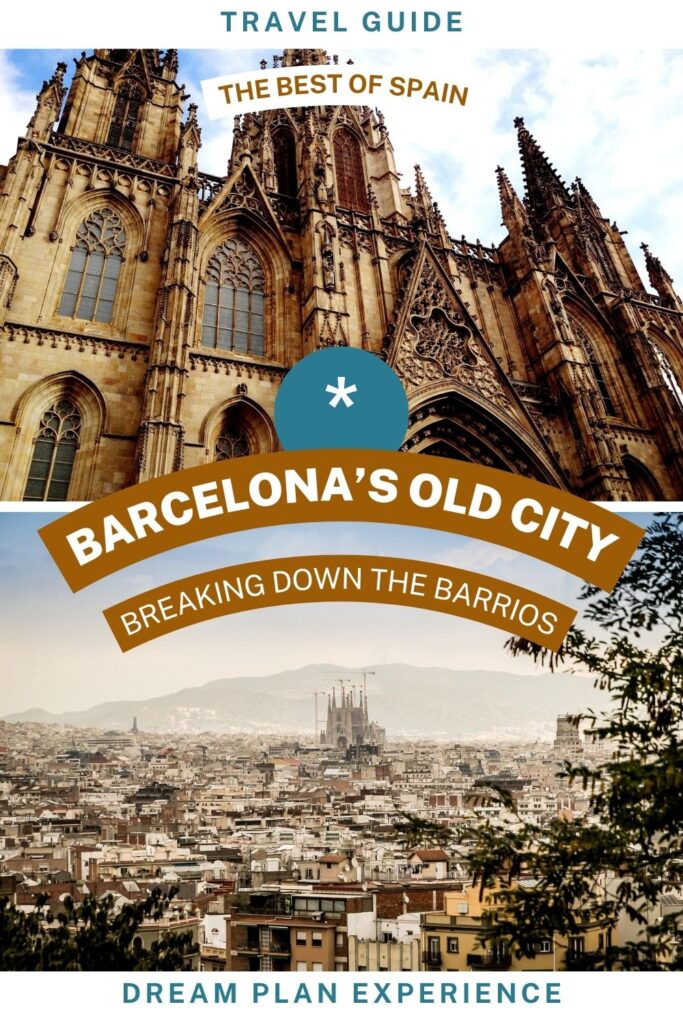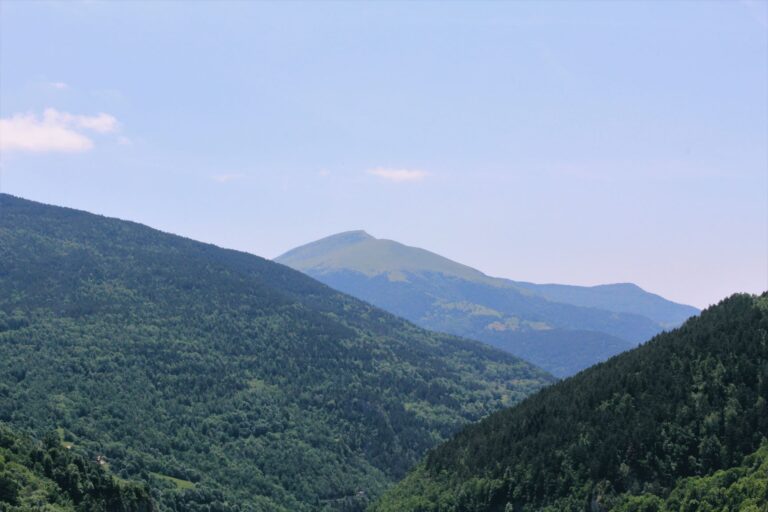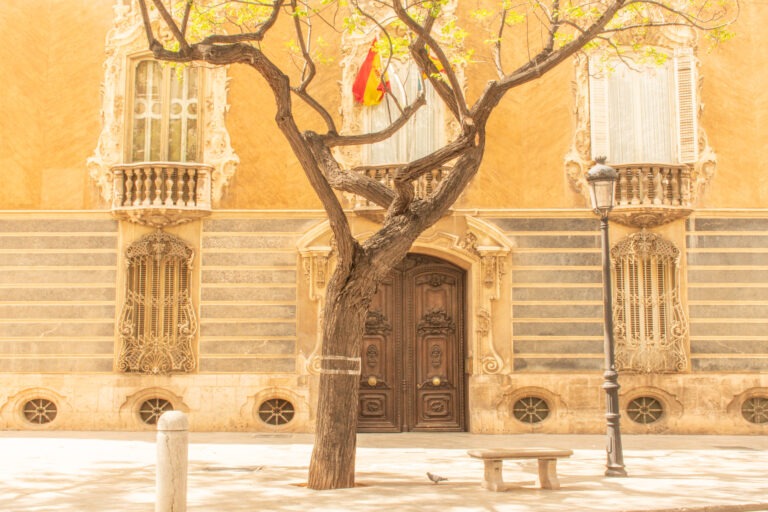Barcelona Old City: Breaking Down the Best Barrios
If you’ve found yourself dreaming of the enchanting Barcelona Old City streets, you’re in for a journey that transcends the ordinary.
Planning a trip to this vibrant Catalan capital and wondering which barrio holds the key to your heart? Fear not, for we’re about to embark on a tour through the soul-stirring heart of Barcelona, unravelling the distinct stories of its different barrios – each a treasure trove of history, culture, and undeniable charm.
The Barcelona old town is a labyrinth of neighbourhoods, each with its own character and allure.
Whether you’re drawn to the Gothic streets of Barri Gòtic, the artistic energy of El Born, the bohemian vibes of Gracia, the trendy boulevards of L’Eixample, or the maritime magic of La Barceloneta, there’s a barrio to suit every traveller’s soul. But, let’s face it – planning a visit to these diverse districts can be a bit overwhelming.
Having spent a week immersed in its sun-soaked streets, I’ve come to appreciate the city’s hidden gems and the unique personality of each barrio. Call me a hidden gem seeker, a connoisseur of Europe’s old city centers – Barcelona is a true masterpiece.
During my stay, I discovered a personal haven in the heart of the city – the Barrio of L’Eixample, nestled close to the lively Gracia. It became my home base, a sweet spot that allowed me to effortlessly explore the surrounding neighbourhoods. But enough about me – let’s focus on you, the intrepid traveller planning your Barcelona adventure.
I will delve deep into the old part of Barcelona giving you insight into the different barrios that make up the old city in Barcelona. By exploring what each neighbourhood is known for and what unique experiences await, you can easily plan your itinerary and find a place to stay.
Table of Contents
This post may contain affiliate links, meaning I get a commission if you decide to purchase something through the links, at no additional cost to you. Read my Affiliate Disclosure.
About Barcelona Old City

Barcelona’s Old City, or Ciutat Vella, constitutes the city’s oldest and historically significant core.
Tracing its origins back to Roman times, when it bore the name Barcino, this area has sustained settlement for over two millennia.
Once enclosed by medieval fortifications, dismantled in the 19th century, the Old Town Barcelona maintains its character with a dense network of streets, alleys, and historic edifices.
Beyond its aesthetic appeal and tourist attractions, the old town of Barcelona thrives as a bustling, lively community. Remarkably, its distinct neighbourhoods, known as barris in Catalan and barrios in Spanish, boast individual personalities and charm.
A Timeline Through History
1st Century BC
- The roots of old Barcelona, known as Barcino during Roman times, trace back to the 1st century BC when the Romans established a settlement in the area.
Medieval Era (5th – 15th Century)
- After the fall of the Roman Empire, Barcelona witnessed Visigothic rule before the Islamic conquest in the early 8th century.
- Under Frankish rule, the Carolingians reclaimed Barcelona from Islamic control in 801, marking the beginning of the Reconquista.
- By the 13th century, Barcelona had evolved into a maritime power, playing a pivotal role in Mediterranean trade.
14th – 15th Century
- Barcelona’s Old City expanded during the Gothic period, and medieval walls were constructed to fortify the growing city.
17th – 18th Century
- Barcelona played a prominent role in the Catalan Revolt (1640-1652) against Philip IV of Spain during the Thirty Years’ War.
- The city faced significant destruction during the War of Spanish Succession (1701-1714), culminating in the Siege of Barcelona.
19th Century
- In the 19th century, the medieval walls were dismantled, opening the Old City to urban expansion.
20th Century:
- Barcelona endured the impact of the Spanish Civil War (1936-1939), leaving scars visible in certain parts of the Old City.
21st Century:
- In 1997, Barcelona’s Old City, along with other landmarks, was designated a UNESCO World Heritage Site in recognition of its cultural and historical significance.
Guide to the Barrios of Old City Barcelona
Barcelona, the second largest city in Spain, is surprisingly compact and relatively easy to navigate.
That’s all due to the neighbourhoods in Barcelona. Streets untangle into connected neighbourhoods all within walking distance of each other.
Barcelona has several distinct neighbourhoods to explore. Each one with its own vibe and things to do.
Gothic Quarter (Barri Gotic): the best neighbourhood for history

Nestled within the historic center of Barcelona lies the captivating Barri Gotic, or the Gothic Quarter, where you’ll find the city’s oldest architectural marvels.
The allure of this district lies in its enchanting maze of narrow, cobblestoned streets, where nearly every building is in the neo-Gothic style.
For history enthusiasts, hidden gem explorers and those visiting Barcelona for the first time, the Gothic Quarter needs to be your first stop!
This predominantly pedestrian district is full of charm and adorned with many bars, cafes, and restaurants scattered in and around its many squares or Placas. Simply getting lost in is my favourite thing to do in the Gothic Quarter.
As the sun sets, the Gothic Quarter transforms into a bustling nightlife. For prospective travellers, keep this in mind as you look for accommodations.
Barri Gotic District: don’t miss…
- Cathedral of Barcelona: the awe-inspiring 11th-century Cathedral Cathedral of the Holy Cross and Saint Eulalia (or Catedral de la Santa Creu i Santa Eulàlia), a masterpiece of Catalan Gothic architecture
- Bishop’s Bridge: one of the most photographed spots in the Gothic Quarter so to see it best arrive in the early morning
- Placa del Rei: an old courtyard surrounded by historic buildings where you’ll find the Royal Palace, a watchtower, and a square called Placa Ramon Berenguer el Gran, with a view of old ruins of a Roman wall
- Placa Reial: a picturesque square full of charm and adorned with palm trees surrounded by lively restaurants making it an ideal spot for people-watching
Barri Gotic District: experience this…
El Born: the best neighbourhood for Barcelona landmarks


Nestled adjacent to the Gothic Quarter, El Born is one of Barcelona’s trendiest neighbourhoods. It also might be the most confusing, as this neighbourhood bears many names- La Ribera, Sant Pere, Santa Caterina.
El Born is simply, very cool. Steeped in history and oozing with a bohemian charm, this quarter seamlessly blends together the old and the new.
By day, come here for the centuries-old landmarks, and by nightfall come here for the lively nightlife. Foodies, this is where you’ll want to come for some of the best tapas bars in Barcelona.
El Born District: don’t miss…
- Basilica of Santa Maria del Mar: a 14th-century masterpiece of Catalan Gothic architecture
- Picasso Museum: art aficionados shouldn’t miss this Museum, which houses one of the most extensive collections of artworks by the 20th-century Spanish artist
- Mercat Santa Caterina: the second-largest market in Barcelona and a must-stop for foodies
- Palau de la Musica Catalana: a Modernist architecture music hall considered a Catalan Art Nouveau masterpiece and declared a UNESCO Heritage site
El Born District: experience this…
El Raval: the best urban neighbourhood

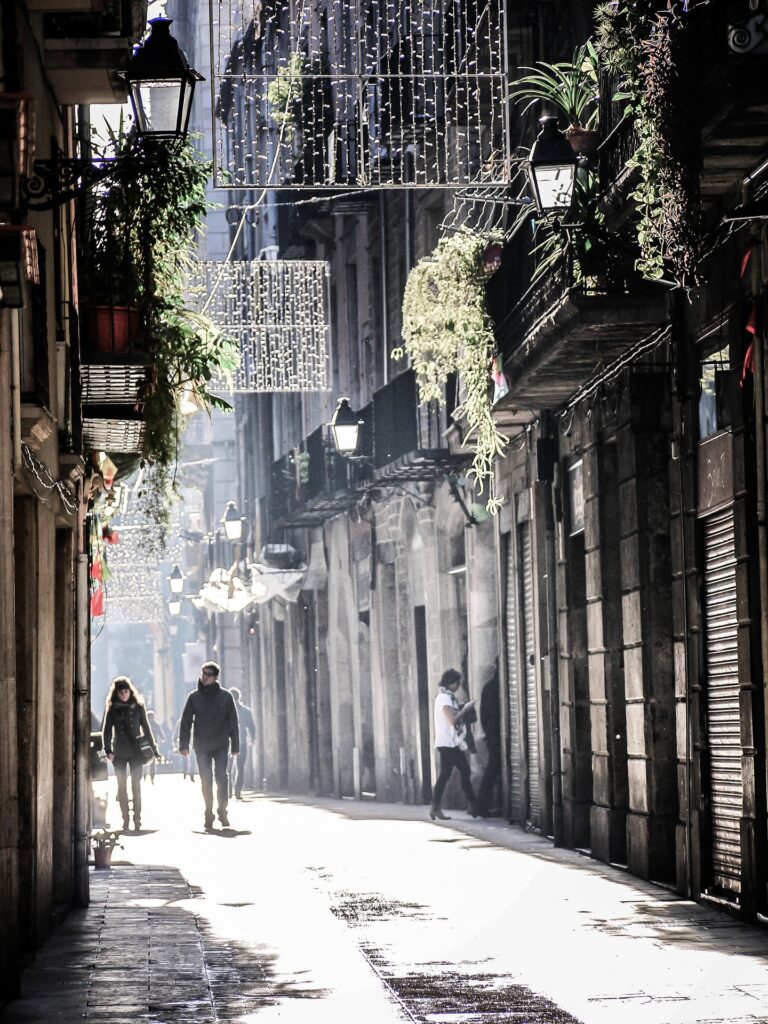
El Raval is one of the most vibrant neighbourhoods in Barcelona where there is always something happening.
It’s also considered the most multicultural Barcelona barri and has a definite urban feel than the rest of Barcelona.
Some people will call this neighbourhood gritty, edgy, or dodgy as its reputation in the 20th century, was for prostitution and pickpockets. Even though things have improved, you can expect to find a lot of graffiti.
This isn’t a neighbourhood for a female solo traveller that I feel safe at night, but if you’re curious like me, come here in the day as there’s lots to see.
El Raval District: don’t miss...
- Stroll down La Rambla: while technically bordering the Gothic Quarter, La Rambla is a must-visit. Enjoy street performers, flower stalls, and a myriad of shops and cafes
- La Boqueria market: dating back to the 13th century, this is one of Europe’s oldest and best markets and a must-stop to grab a bite
- Museu d’Art Contemporani de Barcelona (MACBA): a hub of modern art that is a must for art enthusiasts
El Raval District: experience this…
La Barceloneta: the best neighbourhood for beach lovers

Barceloneta, meaning little Barcelona, is considered one of Europe’s favourite vacation spots due to its beach life.
Nestled along the Mediterranean, La Barceloneta stands as a lively coastal neighbourhood that was once a humble fishing district, but today is lively.
There are four beautiful beaches to enjoy Sant Sebastia, Barceloneta, Sant Miquel and Somorrostro.
This neighbourhood is overrun with beach shops and amenities for beachgoers including cheaper accommodations, fast food and bars.
La Barceloneta District: don’t miss...
- Golden Beaches: stretching along the azure waters of the Mediterranean there are four beautiful beaches to enjoy Sant Sebastia, Barceloneta, Sant Miquel and Somorrostro
- Port Vell: explore Port Vell, the historic harbour, and immerse yourself in the maritime history of the city
- Cable Car: take the cable car from La Barceloneta to Montjuic where you can take in the panoramic views of the city and water at the same time
El Raval District: experience this…
Gracia: the best neighbourhood for trendsetters
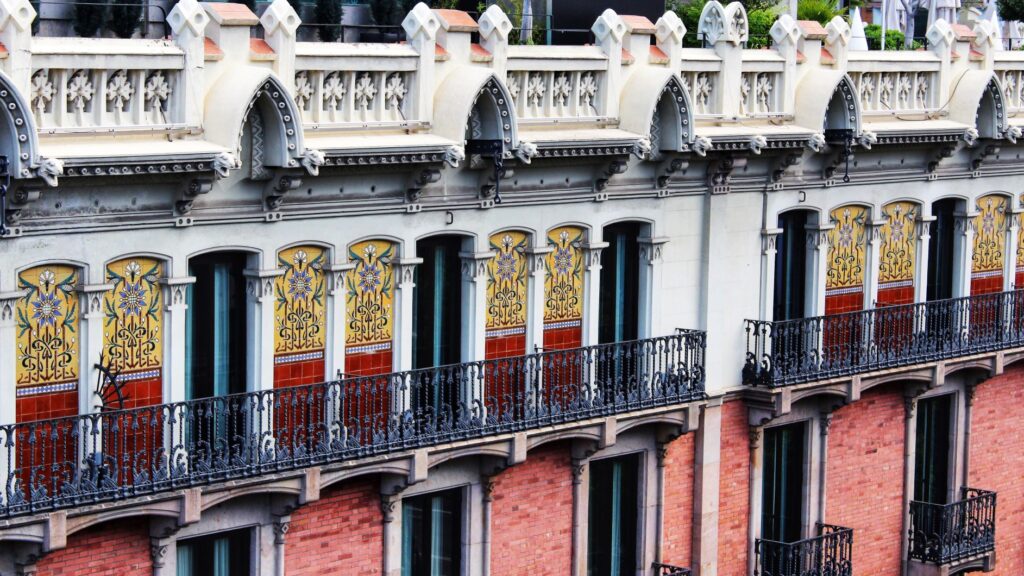
Gracia neighbourhood has elegant squares and architecture, and boutique shops lining the attractive boulevards. My favourite squares were Plaça de la Vila de Gràcia, Plaça del Sol and Plaça de la Revolució.
This is the meeting ground for pre-dinner drinks at 7 pm as people gather and then stay for a late-night dinner. Many of the top restaurants, from tapas to Michelin-star restaurants can be found here.
Come to this Barcelona neighbourhood for a more authentic experience. It’s close enough to the city centre but farther from the hustle and bustle.
Gracia District: don’t miss...
- Gaudí’s Casa Vicens: Marvel at the architectural wonder of Casa Vicens, one of Antoni Gaudí’s early masterpieces. This modernist gem, now a UNESCO World Heritage Site, showcases the whimsical and intricate details that characterize Gaudí’s work
- Stroll, Shop and Sip: stroll the attractive boulevard lined with elegant shops, stop at a cafe and people watch over drinks
- Park Güell: is full of colourful mosaics and whimsical sculptures designed by Gaudí, and offers stunning views of the city
L’Eixample: the best neighbourhood for Gaudi architecture

Architecture is what brings everyone to this neighbourhood!
L’Eixample, meaning “the expansion” in Catalan, is a district that represents the essence of Barcelona’s urban transformation during the 19th and early 20th centuries.
With the grand Passeig de Gracia boulevard at its core, this area is divided into a left and right side. With wide avenues, a geometric grid pattern, and iconic Modernist architecture this is an attractive neighbourhood in Barcelona.
Placa Catalunya and Diagonal Avenue house the most exclusive shops and dining. This was where I stayed. In a modern luxe apartment with a rooftop view of the city.
L’Eixample: don’t miss...
- Architectural Marvels: tour some of the greatest works by Antoni Gaudi like:
- Casa Milà (La Pedrera): sculptural and avant-garde design, featuring undulating stone facades and wrought-iron balconies
- Casa Batlló: A modernist building known for its fantastical facade and unique architectural elements
- Sagrada Família: is the most famous landmark in Barcelona and under construction over multiple decades
As a Holidaymaker
After spending a week I felt at home walking from neighbourhood to neighbourhood exploring Old Town Barcelona.
Staying in the L’eixample was the best choice for me, as it was close to the amazing architecture, restaurants and elegant shops.
Which of these Barcelona neighbourhoods would be your favourite?

